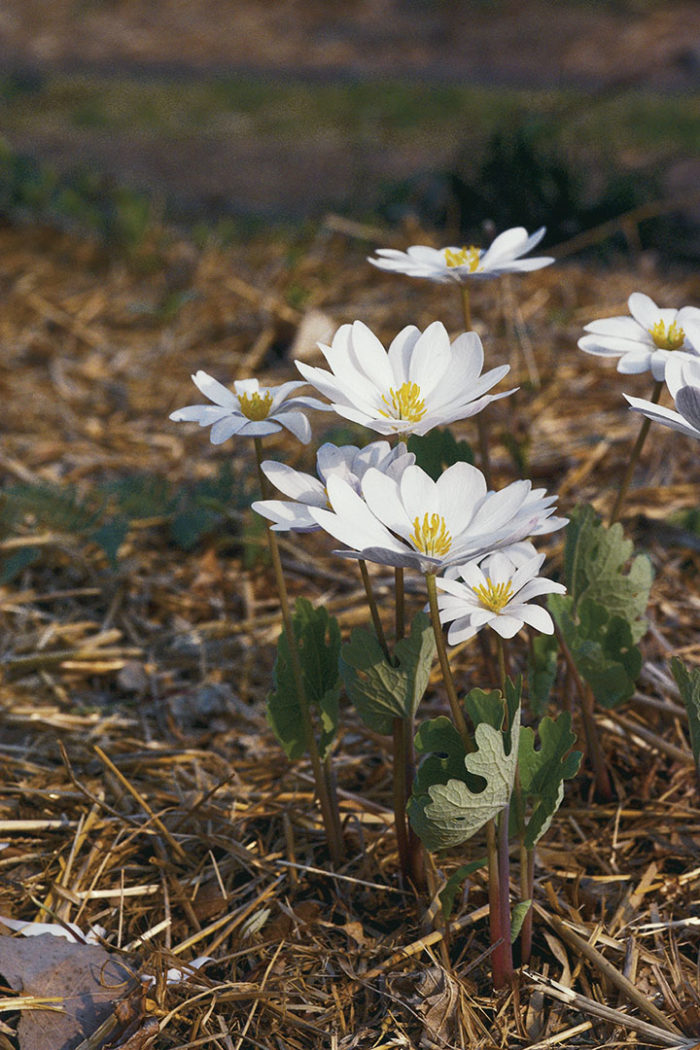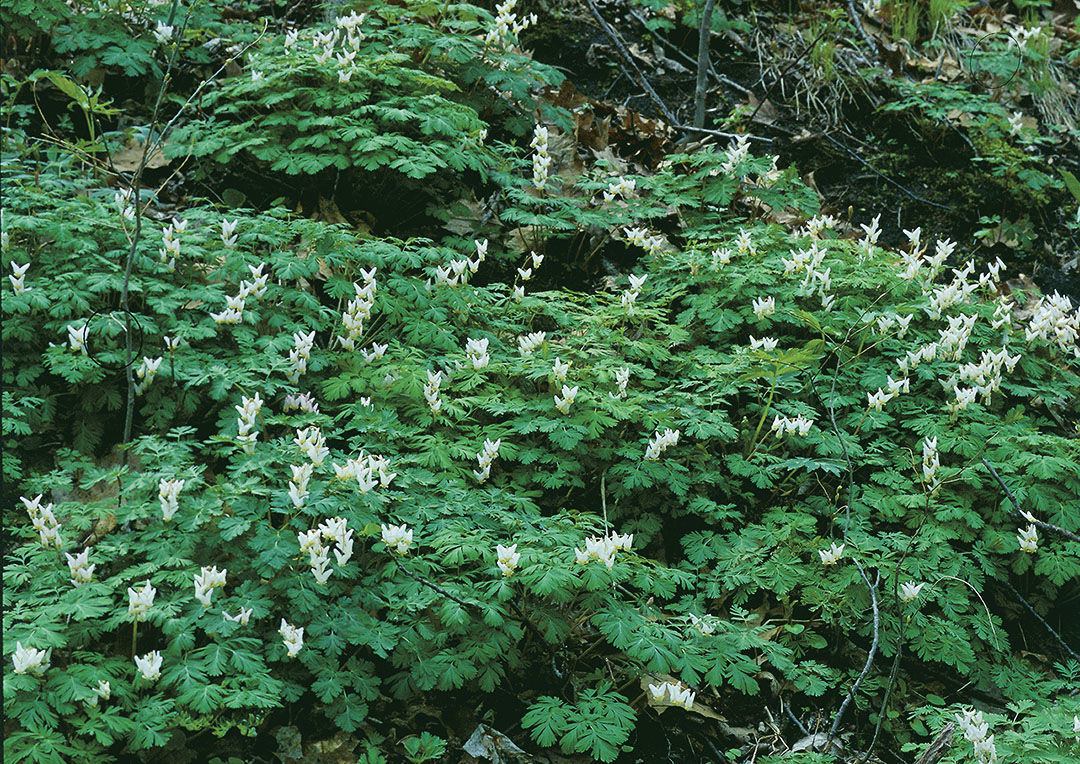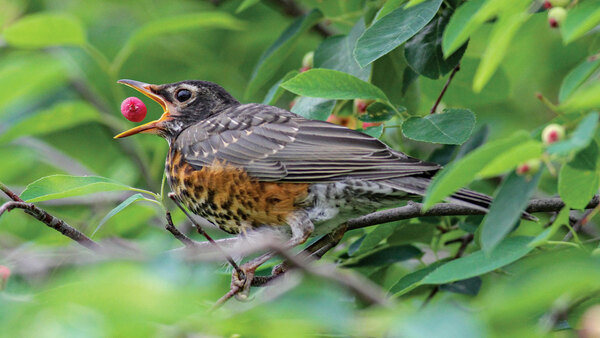
A debate rages in the gardening world about the role of native plants. Purists say only American native plants are appropriate for our gardens and landscapes. Many gardeners prefer natives because they are usually easy to grow and maintain. Others criticize natives as looking weedy or unsophisticated. Members of some nursery organizations fear that emphasis on natives will make many of their more exotic plants less desirable or even unsalable.
Are exotic plants inappropriate in a garden? Does an American plant offer more benefits than one from another continent? To address these complex issues, let’s first define some terms.
Botanically, native plants are defined as those growing and reproducing in a specific site, state, region, or country without introduction. American native plants are generally considered those that grew without cultivation at the time of European settlement. Nonnative, or exotic, species are those that originate outside a particular site, state, region, or country. Japanese plants grown in the U.S. are exotic. Likewise, coralbells (Heuchera sanguinea) from Arizona are exotic in my Minnesota garden. Naturalized plants are those exotics able to perpetuate themselves in a new location without cultivation. Queen Anne’s lace (Daucus carota) is a European native that naturalizes along our roadsides. Although black-eyed Susan (Rudbeckia hirta) is native in parts of North America, it has naturalized far beyond its native range.

What makes a plant native?
When we define a plant as native, we must consider not only its geographical range, but also where it grows in that range, and under what conditions. An American native plant may not thrive in gardens across the continent any more than a plant from Europe or Japan will.
For example, plant ecologists divide North America into 10 floristic provinces—distinct plant communities that support species adapted to high and low seasonal temperatures, annual precipitation, timing and nature of precipitation, elevation, soil, and other factors. Within any province, there are many variable conditions that influence which plants will grow and their growth habits. For example, the Eastern deciduous forest province stretches from Minnesota to Nova Scotia and south to Texas and Georgia, and annual rainfall varies from 55 to 27 inches.
My Minnesota garden is near the border of USDA Hardiness Zone 3 (–40°F), with regular winter temperatures down to –30°F. South Georgia gardeners in Zone 8 (10°F) seldom see temperatures much below freezing. Bloodroot (Sanguinaria canadensis), a perennial wildflower, is native throughout most of the eastern deciduous forest province, but it doesn’t grow in every forest in this province. It thrives in the rich soils of moist woods, alongside streams, and in bottomlands under a canopy of mature trees. But, planted in the wrong site, bloodroot will languish.
Gardeners Can Cause a Crisis
This brings us to horticulture, the art and science of gardening. It’s only when gardeners get involved—by introducing and intermingling plant species—that the native issue matters. Plants have been moved from place to place throughout history for commerce and agriculture. In the first pleasure gardens in Persia, decorative plants were gathered from all corners of the known world. Today, our gardens are filled with plants from all over the globe. Our roadsides, agricultural fields, and waste sites are filled with plants that came here uninvited—by way of ships’ ballast, animal bedding, or even mud on people’s shoes.

In most cases, this mixture of world flora poses little threat to local plant communities. However, sometimes nature and culture collide head on. Some of our worst environmental crises are due to uncontrollable growth of exotic species. These invasive species threaten ecosystems by displacing native species, altering the structure of plant communities, and changing moisture regimens and nutrient cycles. The Florida Everglades are dangerously overrun with Melaleuca, an invasive tree introduced for ornamental and timber purposes. In the northern U.S., wetlands are clogged with purple loosestrife (Lythrum salicaria) from Europe. For every publicized exotic thug, there are dozens that are just as destructive. Autumn olive (Elaeagnus spp.), burning bush (Euonymus alatus), and Oriental bittersweet (Celastrus orbiculatus) are just a few that are displacing natives and altering ecosystems across North America.
Many who denounce exotic plants do so because of these invasive nonnatives. Among more than 350 recognized invasive exotic plants about half were deliberately introduced as ornamentals. But of the many thousands of exotic plants in cultivation, 175 is a relatively small number that should be avoided.
Though it rarely occurs, native species may also become invasive. Common reed grass (Phragmites communis), a native wetland species, has taken over marshes in the East that have been disturbed by cultivation, pollution, or excess sediment from flooding.
What makes a native plant better than a nonnative, or vice versa, and why should we care? This depends on your perspective. Native plants offer many benefits to our gardens besides the potential for lower maintenance. To me, the most compelling reason to grow natives is that they are part of our natural heritage and the ecology of a region. The local native-plant community makes the Midwest visually distinct from the East or South. Our gardens are habitats, and each plant contributes to the overall health of that ecological niche. Plants provide food and cover for insects, which, in turn, are food for birds and mammals.

The purist, natives-only approach has merit, especially in restoring a specific plant community, such as a wetland. However, when humans alter an environment, it becomes more difficult to grow only regionally appropriate natives. A woodlot cleared for farming a century ago, and subdivided for housing a decade ago, has changed considerably. The forest that once grew in rich, stable, humus soil has vanished. Crops and erosion have depleted the soil, and construction has compacted it. Though bloodroot and Dutchman’s breeches (Dicentra cucullaria) may have once carpeted the site, they will no longer grow there. Original native vegetation must be replaced with plants adapted to the current growing conditions. This may even mean that no regional native plants will thrive there.
Personally, I grow natives to promote a dynamic and ecologically healthy environment. Ecology aside, native plants are beautiful. Their colors, forms, fragrances, and textures offer enough variety to appeal to many gardening inclinations. As a landscape designer, I try to create the structure of the native-plant community with the best plants that will thrive on a site. In an urban environment, I may use all site-specific natives, or mix natives and exotics. To me, the key is to cultivate noninvasive plants—whether native or exotic—in their appropriate cultural niches.
—C. Colston Burrell, Native Landscape Design and Restoration, Ltd., Minneapolis
Fine Gardening Recommended Products

Planting in a Post-Wild World: Designing Plant Communities for Resilient Landscapes
Fine Gardening receives a commission for items purchased through links on this site, including Amazon Associates and other affiliate advertising programs.

The Nature of Oaks: The Rich Ecology of Our Most Essential Native Trees
Fine Gardening receives a commission for items purchased through links on this site, including Amazon Associates and other affiliate advertising programs.

ARS Telescoping Long Reach Pruner
Fine Gardening receives a commission for items purchased through links on this site, including Amazon Associates and other affiliate advertising programs.


















Comments
Thank you for a very informative article. Here on my 10 acres in southeast Michigan I have perennial beds with mostly cultivated varieties of natives and non-natives. However, more and more, I am planting natives. I also spend a huge amount of time going after the invasives and seeing the natives return.
Your article was very helpful and I will share it with friends. . . . My issue is that, living in California 9b, most of the natives barely need a hose waved over them to survive once established, whereas even Mediterranean exotics need more water than that. And many natives grow larger than my small property and bungalow can handle. in a front yard garden setting. Would appreciate your thoughts on this (a new article?) or if you could point me in the direction of a well-curated reference for intermixing small garden exotics and natives for my zone.
Mr. Burrell only touched on the reason I, personally, plant natives: their role in sustaining the birds and wildlife I want to do my best to help. It's important, as he says, to appreciate and plant to suit the ecology and microenvironment of one's garden, but in addition, it's good to know *which* natives are good for which purposes. Which ones are birds particularly dependent on? How can you support them through the seasons? Pollinators, on the whole, are more generalist than birds and larvae, so you can plant non-natives that are popular with pollinators and enjoy the sight of a buzzing, frenetic activity. But if you want butterflies, you need to be quite specific in your choice of natives, and you need to alter your garden hygiene practices, as well, not cutting back your host plants until rather late in the spring, not tidying away your leaves from the flower beds, not covering every inch of dirt with mulch. http://www.bedfordaudubon.org
Log in or create an account to post a comment.
Sign up Log in